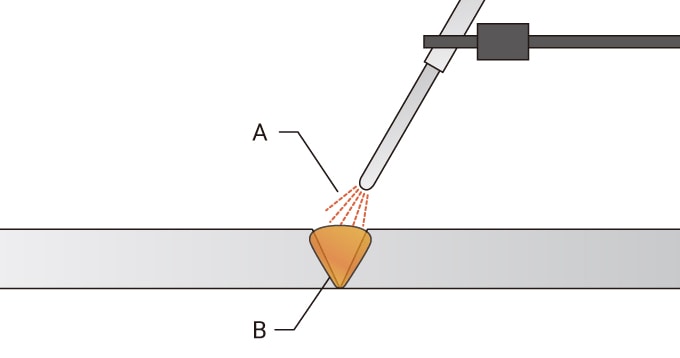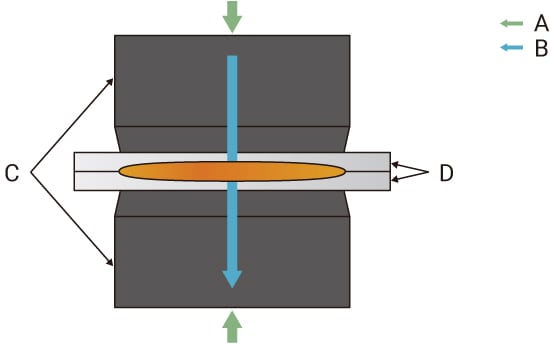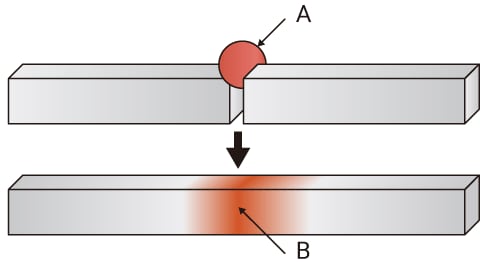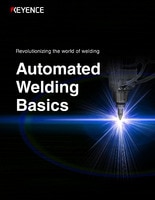Principles of welding
This page explains the principles of fusion welding, pressure welding, and brazing/soldering through arc welding, resistance spot welding, and brazing as examples.
Fusion welding
Fusion welding is the most common welding method.
Fusion welding is a process of welding by melting one or both of a base material and a filler material.
Arc welding is a common example of fusion welding. Arc welding and laser welding are generally used for automatic welding using robot arms. In complicated product assembly lines, such as for automobile parts, robot and human welding are used depending on the characteristics or conditions of the process.
- Arc welding
-

- Arc
- Weld
Pressure welding
Pressure welding can be classified into three types: friction welding takes advantage of the property whereby when a material is deformed by a certain force, the deformation remains even when the force is removed (plasticity). Gas pressure welding joins two base materials by bringing them into contact under pressure and heating them with gas. Resistance spot welding joins two base materials by holding them together and conducting electric current to heat them with the heat generated by electrical resistance.
Since friction and resistance spot welding can be automated without human intervention, they are widely used in automatic pressure welding machines on FA (factory automation) sites.
- Resistance spot welding
-

- Pressure force
- Flow of electric current
- Electrodes
- Weld materials
Brazing/soldering
Brazing/soldering is a method of joining base materials by using a filler material (brazing paste) that has a lower melting temperature (melting point). Filler materials have been blended with flux to prevent the base material from melting and to ensure proper joins with the base material.
Filler materials are required to not only have a melting temperature lower than that of the base material but also provide high affinity to ensure atomic bonding between the molten filler material and base materials.
A variety of filler materials are used depending on the materials to be joined, such as aluminum, silver, copper phosphorus, and brass. Soft filler materials with low melting points, such as zinc, lead, tin, and tin-lead alloy, are generally called solders.
Since brazing and soldering can join metals easily, it has been used widely for commodities, fine arts and crafts, and dental applications. Soldering that takes advantage of the conductivity of filler materials is used for electronic circuits or other devices in various industries from home appliances, aviation, nuclear power, and chemical equipment.

- Filler material or solder
- Joined section




